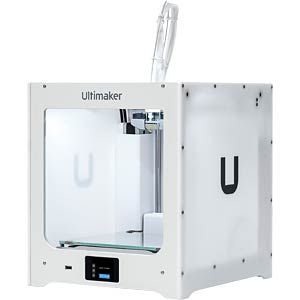Ultimaker 2+ 3D Printer Review

Ultimaker 2+ Connect
Ultimaker3D printer - FDM
AI summary
Overview
The Ultimaker 2+ is a well-regarded 3D printer within the maker community, lauded for its build quality, reliability, and the ability to produce high-quality prints. From its Bowden style extruder to its versatile nozzle options provided by the Olson block, the Ultimaker 2+ offers a varied printing experience suitable for a wide range of materials including PLA, ABS, CPE, CPE+, PC, nylon, and TPU. Its build area of 223 x 223 x 205 mm supports a generous size for projects, and the glass bed heating up to 100°C in less than four minutes is a stand-out feature for enthusiasts requiring fast and efficient print preparation time. Additionally, the inclusion of controllable LED lights within the frame not only enhances the aesthetic appeal but proves invaluable for those wanting to document their printing process through time-lapses.
Print Quality and Material Compatibility
The Ultimaker 2+ demonstrates impressive print quality across a variety of materials and models. From intricate structures like the Eiffel Tower to detailed character models and functional parts, the printer manages overhangs and intricate details with ease, largely due to the precise control offered by the interchangeable nozzles ranging from 0.25 to 0.8 mm. Even with materials known for being challenging to print with, such as flexible and translucent filaments, the Ultimaker 2+ has shown to handle them with remarkable finesse, producing consistent and clean prints. The Olson block significantly contributes to this versatility, making nozzle swaps straightforward and allowing users to tailor their printer to the task at hand.
User Experience and Maintenance
User interaction with the Ultimaker 2+ is facilitated through an intuitive menu system navigated via a click wheel, reminiscent of classic iPod interfaces. This, combined with the assisted bed leveling system, makes for a user-friendly setup process, especially appreciated by those less experienced in manually leveling a print bed. While the printer does not feature automatic bed calibration, the assisted system simplifies the leveling to the point where it becomes an accessible task for users at all skill levels. The maintenance of the Ultimaker 2+ is further simplified by the ability to easily interchange nozzles and by the durable construction of the machine, which appears built to withstand high-use environments such as educational facilities and maker spaces.
Potential Drawbacks
Despite its numerous strengths, the Ultimaker 2+ does come with some caveats. One point of contention could be the process of loading filament due to the Bowden tube and extruder setup, which may present challenges, particularly for beginners. However, this is often quickly overcome with experience. Another consideration is the need for careful removal of prints from the glass bed, especially with materials that adhere strongly to the build surface, to avoid damage.
Final Thoughts
Overall, the Ultimaker 2+ is poised as a compelling option for those seeking a reliable, versatile 3D printer capable of producing high-quality prints across a diverse array of materials. Its ease of use, coupled with advanced features like the interchangeable Olson block nozzles and the assisted bed leveling system, renders it suitable not only for hobbyists but also for educational and professional settings where print quality and reliability are paramount. While minor drawbacks exist, they are largely overshadowed by the printer’s performance and build quality. For potential buyers, investing in an Ultimaker 2+ means acquiring a tool that will cater to a wide range of 3D printing needs, from intricate models to robust, functional parts.
